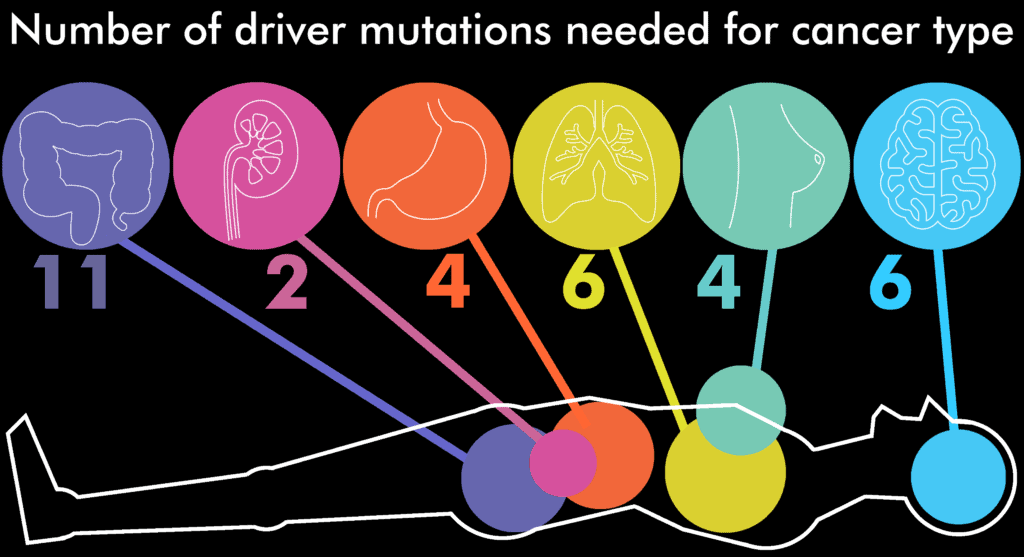Just a handful of mutations — between one and ten — are required for the cancerous cells to emerge.

If you’d carry out a comparison between healthy and cancerous tissues, you’d see thousands of differences (mutations). But while some of them are indeed responsible for the cancer, others are just along for the ride. Researchers at the Wellcome Trust Sanger Institute have now shown that just a few of them are really the cause of the problem.
For instance, they found that it takes 10 mutations for a colorectal cancer, four for a breast or liver cancer, and a single mutation for thyroid and testicular cancers.
Speaking to the BBC, study author Dr. Peter Campbell said that this study answers a heated debate.
“We’ve known about the genetic basis of cancer for many decades now, but how many mutations are responsible has been incredibly hotly debated.
“What we’ve been able to do in this study is really provide the first unbiased numbers.
“And it seems that of the thousands of mutations in a cancer genome, only a small handful are responsible for dictating the way the cell behaves, what makes it cancerous.”
If we know which few mutations out of the thousands are the underlying cause, then medics can focus their efforts on tackling those, ignoring the neutral mutations. The study could lead to improved precision treatments, and perhaps even to preventive genetic tests. This approach has significant potential to move from research to clinical practice.
Since cancer is such a complex disease which evolves and changes over time, having a way to pinpoint the specific drivers of cellular mutations can make a massive difference in the way we both treat and prevent cancer.
“We now know of hundreds of genes, that when mutated, drive cancer,” added Professor Sir Mike Stratton, an author of the study and director of the Wellcome Trust Sanger Institute. “This research shows that across cancer types a relatively consistent small number of such mutated genes is required to convert a single normal cell into a cancer cell, but that the specific genes chosen differ according to cancer type. The study also shows that we have not yet identified many of these driver genes and they will be the target for further searching in the future. This increasingly precise understanding of the underlying changes that result in cancer provides the foundation for the discovery and use of targeted therapies that treat the disease.”
Journal Reference: Iñigo Martincorena et al. Universal Patterns of Selection in Cancer and Somatic Tissues. DOI: http://dx.doi.org/10.1016/j.cell.2017.09.042






